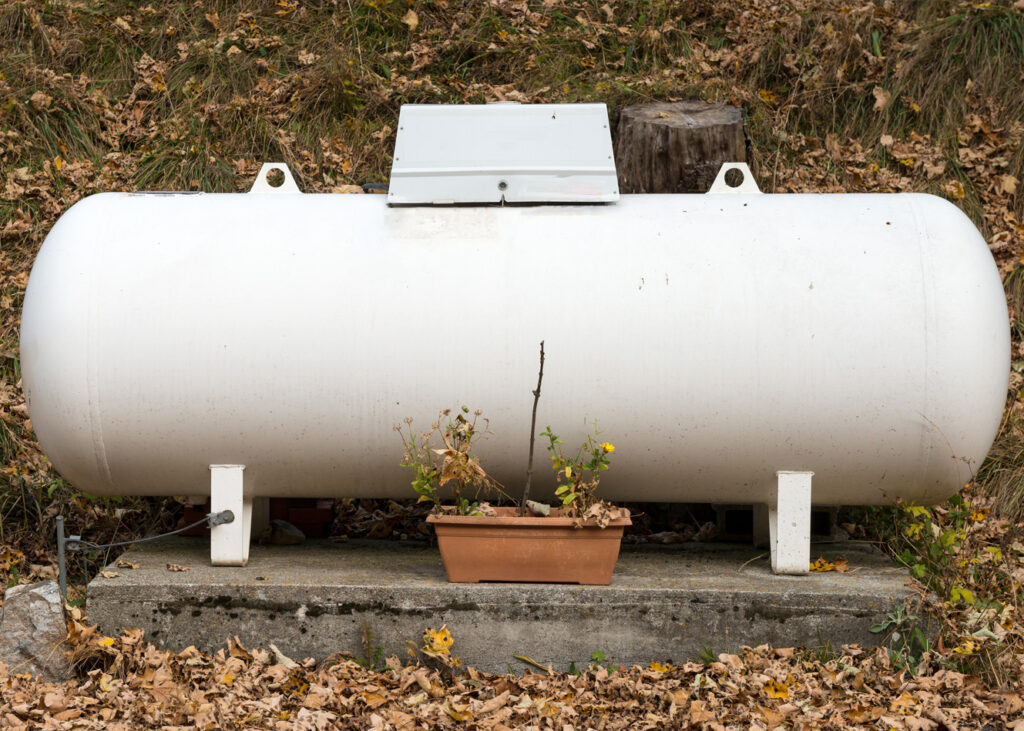The Problem of Unsightly Propane Tanks
Propane tanks are a necessity for any home that uses propane gas for cooking or heating. However, these tanks can often be unsightly and ruin the curb appeal of your outdoor living space. It is a common problem faced by most homeowners as to how to hide propane tanks on their patio without compromising on their safety guidelines.
An unsightly propane tank can be an eyesore in a well-maintained outdoor living space. Sometimes, it is not feasible to bury the tank underground or hide it behind a garden bed or a white picket fence. This is where propane tank covers and privacy screens come to the rescue. They not only hide these tanks but also enhance the overall look of your outdoor seating area.
Propane gas tank covers are available in different materials, including steel, faux-stone, and wood. They can be designed to match the outdoor paint or complement the beautiful colors of your surrounding landscape. Proper insulation ensures that these covers protect your propane tanks from the elements and keep them safe.
You can also choose to hide your propane tank in a stylish tank holder. Tank hideaways or tank storage boxes come in a variety of shapes and sizes and can be customized to suit your individual needs. Such options not only hide your propane tanks but add flair to your outdoor living space with unique designs and patterns.
Another popular option is to camouflage your propane tanks with natural screens made of tall plants. These screens not only blend in with the environment but also create a natural barrier for privacy from prying eyes.
But, before you decide on the hiding options, it is imperative to ensure that the propane tank is easily accessible and meets all safety guidelines. Propane tank covers should not be placed too close to the propane fire pits or gas fire pit tables to avoid any fire hazards. Safety is the top priority for any propane tank storage solution.
In conclusion, propane tanks need not be an eyesore in your outdoor living space. With the options mentioned above, you can now hide your propane gas tanks in style and enjoy a picturesque outdoor seating area. So go ahead and take the necessary steps to enhance your patio’s curb appeal and keep your home looking beautiful.
Why Hide the Tank?
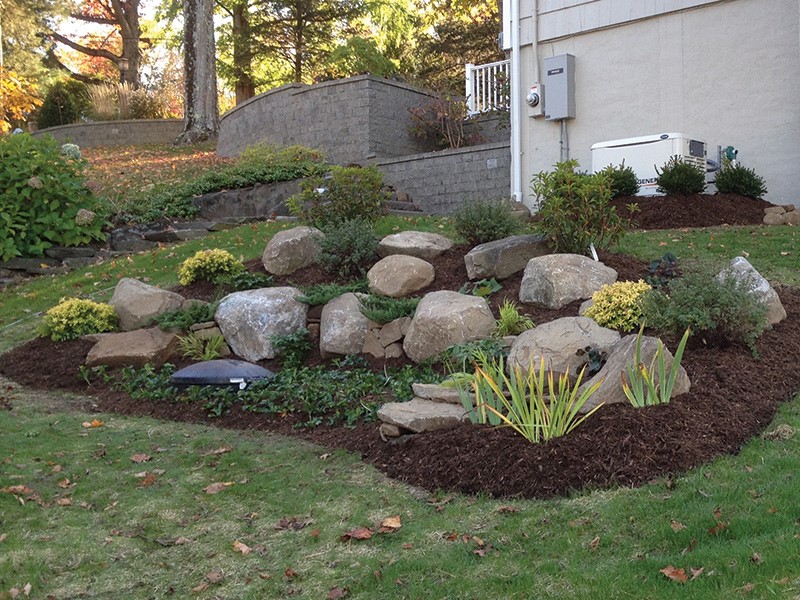
If you have a propane tank on your patio or outdoor living space, you may be wondering why you should even bother to hide it. After all, it’s just a tank, right? Well, there are a few reasons why it’s a good idea to conceal your propane tank from sight.
One of the most obvious reasons is aesthetics. Propane tanks can detract from the beauty of your outdoor space, especially if they’re rusty or unsightly. If you’ve put a lot of time and effort into creating a beautiful patio or garden, you don’t want to ruin the effect with an ugly propane tank.
Another reason to hide your propane tank is to improve your home’s curb appeal. If you’re planning to sell your home at some point in the future, a visible propane tank could be a turn-off for potential buyers. On the other hand, if you have a well-concealed tank, it can actually enhance the look of your home and give it a more polished, put-together appearance.
Safety is another important consideration. While propane tanks are generally safe when handled properly, they do have the potential to be dangerous if mishandled or damaged. By hiding your tank, you can reduce the risk of someone accidentally tripping over it or otherwise causing damage.
Finally, hiding your propane tank can be a matter of privacy. If your outdoor space is visible from the street or from your neighbors’ yards, you may not want the world to see your propane tank. By concealing it, you can create a greater sense of privacy and make your outdoor space feel more like your own personal sanctuary.
Whether you choose to use a propane tank cover, a privacy screen, or another type of solution, the most important thing is to ensure that your tank is always visible and easily accessible to trained professionals. With the right hiding solution, you can enjoy all the benefits of propane without sacrificing the beauty and safety of your outdoor space.
Preparing the Patio Area
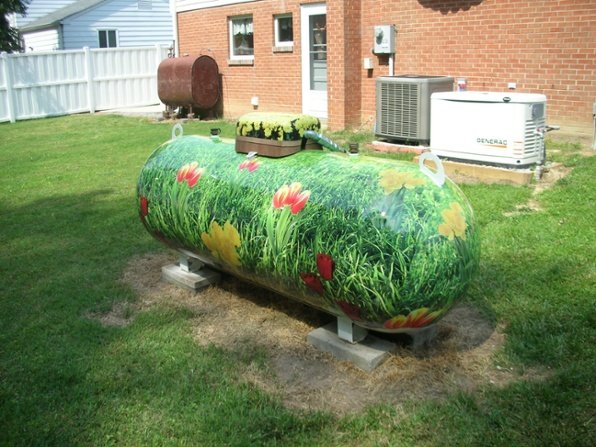
Preparing the patio area is an exciting part of creating a beautiful outdoor living space. Before you start thinking about furniture and decor, it’s important to take some time to prepare the area itself. Proper preparation can make all the difference when it comes to the look and longevity of your patio.
The first step in preparing your patio is to clear the space. Remove any debris or old furniture and give the area a good cleaning. This is also a great time to inspect the area for any damage or wear and tear that may need repair.
Next, consider the type of foundation you want for your patio. A solid concrete foundation will provide the most durability, but there are other options such as pavers, stones or even wood. Consult with a professional if you’re unsure which foundation is best for your space.
Once the foundation is laid, it’s time to think about any additional features you want in your outdoor space. If you’re planning on using a propane tank for heating or cooking, consider ways to hide it or incorporate it into the design. There are a variety of creative solutions for hiding unsightly propane tanks such as tank covers or storage boxes. For added privacy, consider installing a natural screen or incorporating tall plants or even a white picket fence.
Finally, it’s important to consider the safety guidelines when using propane tanks. Make sure it’s properly insulated and the tank valve is secure. If you plan to use a propane fire pit or gas fire pit table, make sure you have the proper fuel tank and follow all safety guidelines for operation.
In conclusion, properly preparing your patio area is the first step in creating a beautiful outdoor living space. By taking the time to clear the space, establish a sturdy foundation, consider additional features and adhere to safety guidelines, you can ensure that your patio will be a functional, safe and beautiful addition to your home.
Safety Guidelines for Working with Propane Tanks
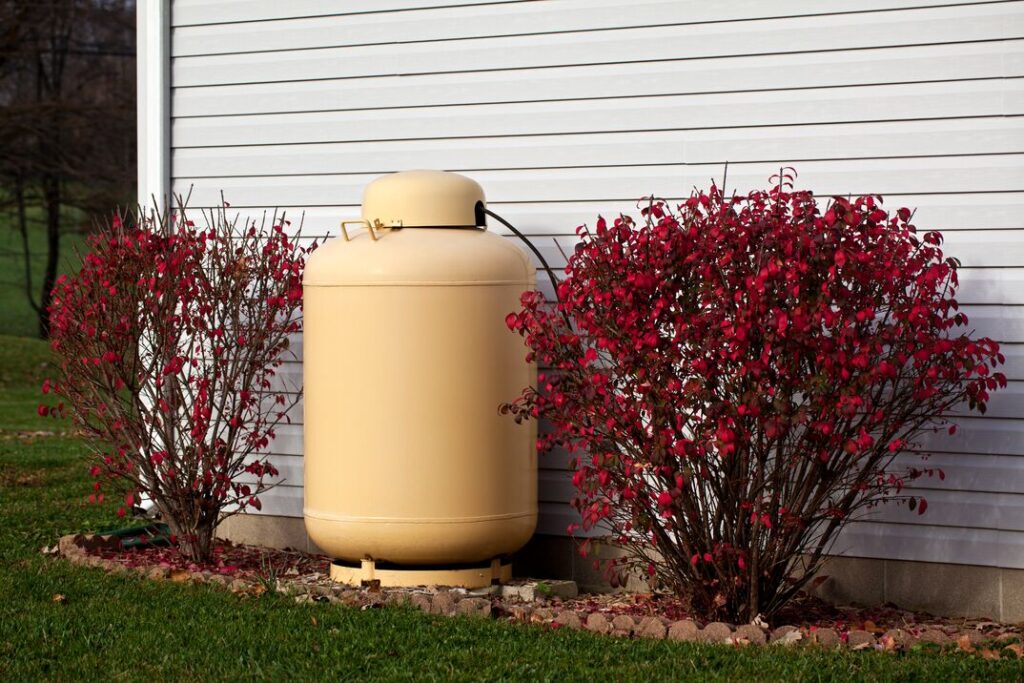
Working with propane tanks can be a convenient and useful way to provide heat or fuel for your home or business. However, it’s important to keep safety in mind at all times when dealing with propane tanks. Here are some essential safety guidelines to follow when working with propane tanks.
First and foremost, always review the manufacturer’s instructions for your specific propane tank before use. It’s important to know the proper way to handle, store, and use your propane tank to prevent accidents.
Make sure your propane tank is stored in a well-ventilated area, away from any sources of heat or ignition. Never store propane tanks inside your home or garage, and always keep them at least 10 feet away from buildings or combustible materials.
When using propane tanks, always check for leaks before use. You can do this by applying a solution of soapy water to the valve and connections. if bubbles appear, this indicates a leak, and the tank should be turned off and repaired or replaced.
When transporting propane tanks, make sure they are secured upright and not rolling around in your vehicle. Never leave a propane tank in a hot vehicle or in direct sunlight.
If you smell gas or suspect a leak, immediately turn off the propane tank and vacate the area. Call for professional assistance to fix the issue.
It’s important to also use the proper equipment and accessories when working with propane tanks. This includes using the appropriate hoses and regulators, as well as wearing protective gloves and goggles when handling propane.
Regular maintenance is also key to staying safe when working with propane tanks. Make sure your propane tank is regularly inspected and maintained by a qualified professional.
By following these essential safety guidelines when working with propane tanks, you can keep yourself and those around you safe while enjoying the benefits of this convenient fuel source.
Proper Insulation for a Propane Tank
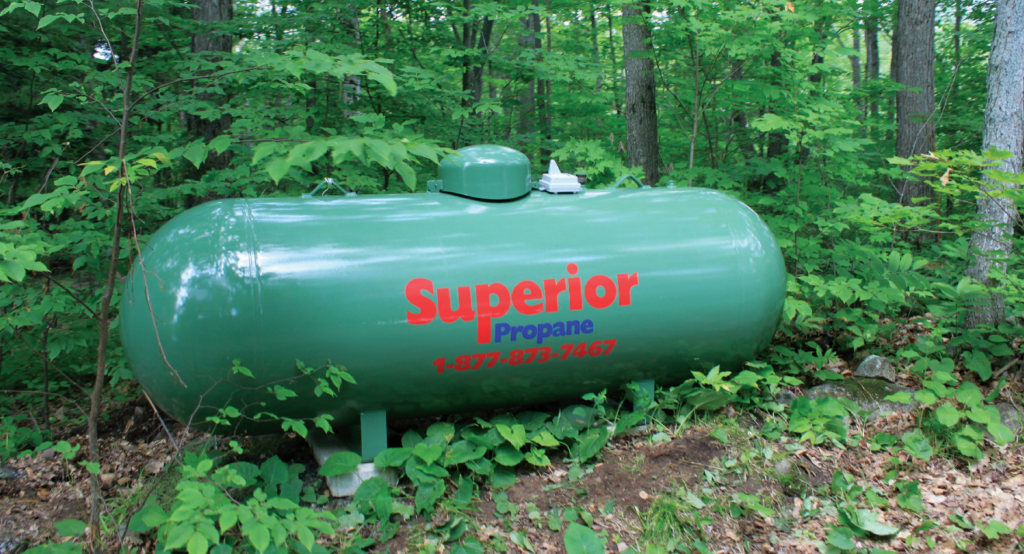
Proper insulation for a propane tank is essential to ensure the safe storage and optimal performance of your propane tank. Insulation helps to protect your propane tank from extreme temperatures, which can affect the integrity of the tank and its valves. It is also crucial to prevent the propane from freezing and turning into a liquid state, which can lead to safety hazards and decreased efficiency.
Insulation can be done in several ways. One common method is by using a propane tank cover. These covers are typically made of insulated materials and provide extra protection against temperature changes. They also come in different colors and designs, allowing you to choose a cover that complements your outdoor living space’s aesthetics.
Another way to insulate your propane tank is by using a propane tank cabinet or enclosure. These cabinets are designed to enclose your propane tank fully and provide an extra layer of insulation. Some models even come with locking doors, which add an extra level of security to your propane tank.
When insulating your propane tank, it is important to ensure that there is adequate ventilation. Propane tanks need to breathe to release excess pressure. Without proper ventilation, the pressure build-up could lead to leaks or an explosion.
In addition to using insulation, it’s crucial to be aware of other safety guidelines when handling propane tanks. Always keep your propane tank at least 10 feet away from buildings or combustible materials. Store your propane tank in a well-ventilated area, away from heat or ignition sources. Regularly check your propane tank for leaks and ensure that it is properly maintained by a qualified professional.
In conclusion, proper insulation is crucial in ensuring the safe and efficient storage of your propane tank. Whether you use a propane tank cover, cabinet, or enclosure, always make sure that there is adequate ventilation and follow other safety guidelines to prevent accidents and keep your propane tank in optimal condition.
Choosing the Right Size and Type of Tank
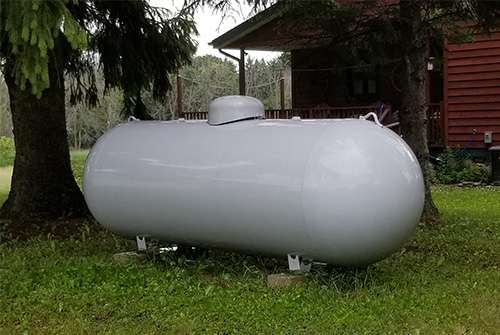
If you’re planning to use propane for outdoor heating, grilling, or other activities, it’s essential to choose the right size and type of tank. Propane tanks come in various sizes, from small 20-pound cylinders to large 500-gallon tanks. The size of the tank you choose will depend on how much propane you plan to consume and how often you use it.
For example, if you only use propane for occasional grilling, a 20-pound cylinder may be sufficient. However, if you use propane for heating your outdoor living area, a larger tank may be necessary. A 500-gallon tank can provide enough propane to heat a large outdoor space for extended periods.
It’s also essential to choose the right type of tank. There are both above-ground and underground propane tanks. Above-ground tanks are more common and easier to install, but they may not be suitable for all locations. For example, if you live in an area with strict zoning regulations, an underground tank may be required.
Another factor to consider is the type of valve on the tank. Propane tanks can come with either an OPD (Overfill Protection Device) or non-OPD valve. An OPD valve is required by law for all propane tanks that are 40 pounds or larger and provides an additional layer of safety.
Other features to look for when choosing a propane tank include a gauge to indicate the level of propane and a safety relief valve to prevent overpressure. Some tanks also come with a built-in heating source, which can prevent icing during cold weather.
Ultimately, the size and type of propane tank you choose will depend on your specific needs and usage. Take the time to research your options and consult with a propane professional to ensure that you select the right tank for your outdoor propane needs.
Hiding the Tank
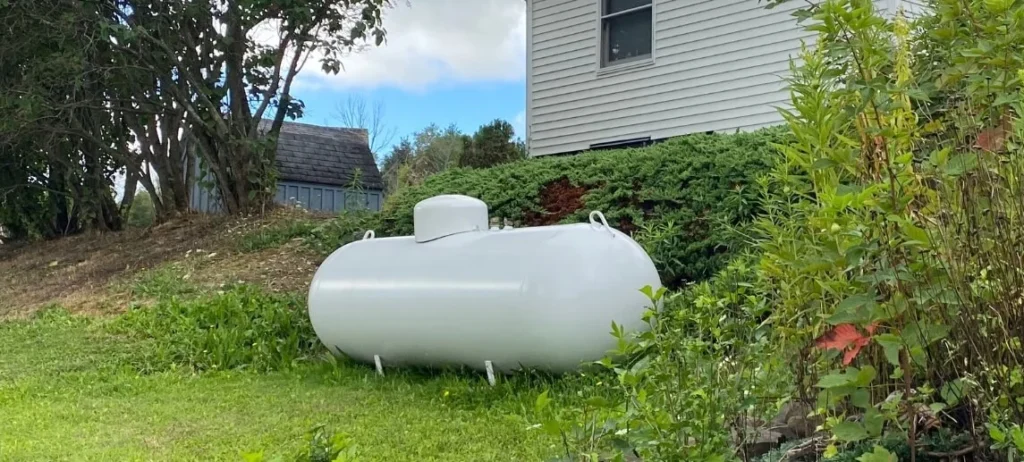
An unsightly propane tank can take away from the beauty of your outdoor living space. Luckily, there are many ways to hide your propane tank while still following proper safety guidelines.
One option is to use a propane tank cover. These covers come in many different styles and designs, from simple vinyl covers to covers that look like stone or wood. A propane tank cover not only hides the tank but also adds to the overall curb appeal of your outdoor space.
Another option is to use a privacy screen. This can be a natural screen, such as tall plants or a white picket fence, or an artificial screen, such as a fabric wall or metal screen. Not only does this hide the tank, but it also creates a more intimate and private outdoor seating area.
If you want to incorporate the tank into your outdoor decor, consider using a tank storage box or hideaway tank holder. These come in many different styles and can be used as a functional seating option or as a decorative element in your outdoor space.
For those who want a more upscale and discreet propane tank holder, there are options like the Elementi Manhattan or Hampton tank cover. These covers have sleek designs that can blend seamlessly with your outdoor seating and decor, adding an extra touch of elegance to your space.
No matter which option you choose, it’s important to ensure that your propane tank is properly insulated and ventilated. This will not only maintain the efficiency of your propane usage but also ensure the safety of your outdoor living space.
Overall, there are many creative and practical ways to hide your propane tank while still maintaining the functionality and beauty of your outdoor living area. Don’t let an unsightly propane tank detract from the beauty of your space – hide it in style.
Using a Propane Cover to Hide the Tank
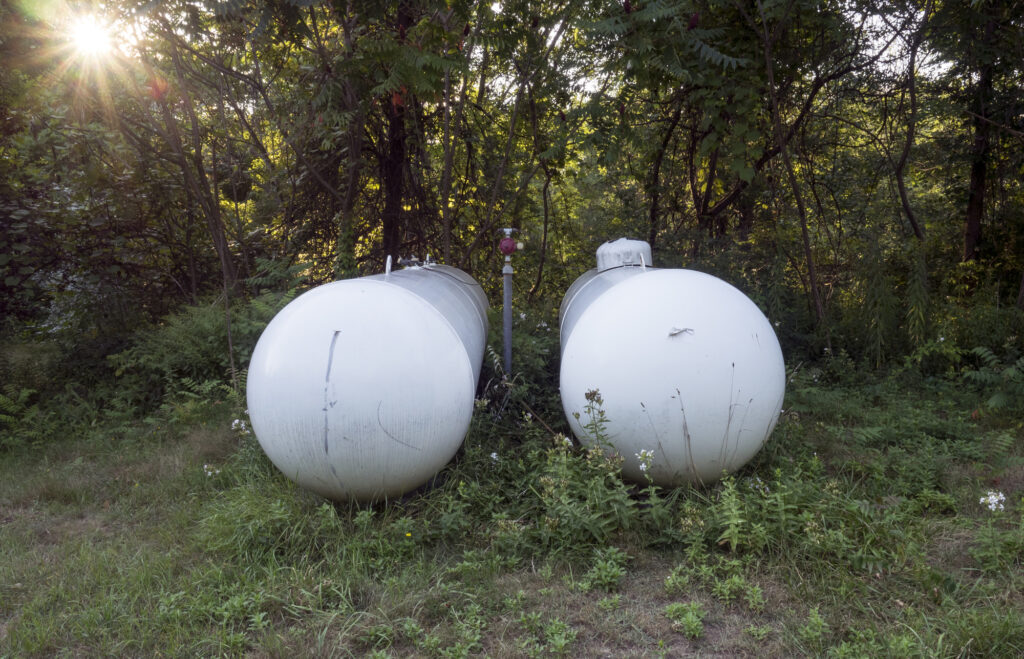
If you have a propane tank on your patio or in your yard, you may have wondered how to hide it from view. While it’s important to keep your propane tank accessible and properly ventilated, that doesn’t mean it has to be an eyesore. One solution is to use a propane tank cover.
Propane tank covers come in a variety of styles and materials, so you can choose one that complements your outdoor decor. For example, if you have a modern patio with clean lines and sleek furniture, you might opt for a cover that has a minimalist design. On the other hand, if your outdoor space has a rustic feel, you might prefer a cover made from faux stone or wood.
In addition to hiding the tank, a propane cover can also help protect it from the elements. Sun, rain, and extreme temperatures can all have an impact on a propane tank’s performance, so a cover can help ensure that it lasts longer.
When choosing a propane tank cover, make sure to measure your tank first. Most covers are specifically sized for certain tanks, so you’ll need to ensure that you’re buying the right one. Additionally, make sure that the cover you choose is made from a material that can withstand the outdoor elements. Look for covers that are specifically designed for outdoor use, and that are made of durable materials like vinyl or weather-resistant fabric.
Finally, remember that safety is always a top priority when dealing with propane tanks. Make sure that your tank cover does not interfere with the tank’s valves or safety features, and that it is properly ventilated. If you’re not sure whether a particular cover is safe to use, consult with a professional installer or the manufacturer before making a purchase.
Overall, using a propane cover is a great way to make your outdoor space more attractive and functional. Whether you choose a simple vinyl cover or an upscale design like the Elementi Manhattan or Hampton tank cover, you’ll be able to enjoy your patio or yard without being distracted by an unsightly propane tank.
Natural Screens for Privacy
If you’re looking for a way to improve the privacy of your outdoor living space without sacrificing its natural beauty, then natural screens might be the perfect solution for you. Natural screens are created by strategically planting tall, dense foliage to create a barrier between your space and the outside world. By using plants to create privacy screens, you can enjoy the seclusion and tranquility of your outdoor space while still feeling connected to nature.
One major advantage of natural screens is that they’re not limited by the same design constraints as traditional privacy fences or walls. Instead, you can get creative with planting choices, creating a colorful and unique outdoor space that truly reflects your personal style. Whether you want to use evergreen shrubs, flowering trees, or a combination of both, the choice is entirely up to you.
Another benefit of natural screens is that they help to improve the overall beauty of your garden or outdoor living area. Unlike other privacy solutions, natural screens blend seamlessly into the surrounding landscape and add a lush, tranquil atmosphere to your space. Plus, the added greenery will help to filter pollutants and noise, creating a healthier and more peaceful environment.
When selecting plants to use for your natural screen, it’s important to consider factors like sun exposure, soil conditions, and plant growth patterns. Some popular choices for privacy screens include bamboo, tall grasses, arborvitae, and evergreen hedges. By choosing plants that are well-suited to your local climate and soil conditions, you can help ensure that your natural screen thrives year-round.
Overall, using natural screens to create privacy in your outdoor space is a smart and environmentally-friendly choice. By incorporating plants into your outdoor design, you can create a private, serene retreat that truly reflects your taste and style.
Building a White Picket Fence Around the Tank
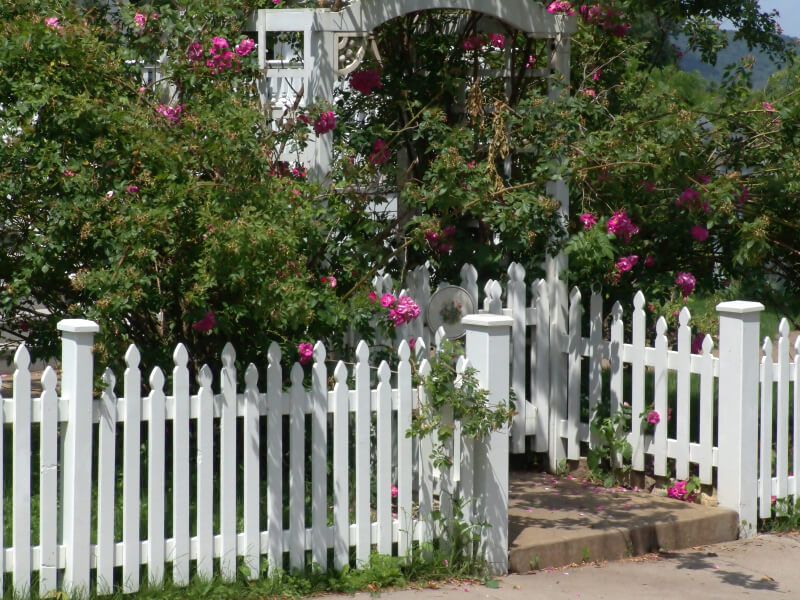
Are you tired of looking at your unsightly propane gas tank every time you step onto your patio? One solution that can instantly add curb appeal to your outdoor space is building a white picket fence around the tank.
Not only does a fence provide visual interest, it also adds an element of safety by creating a barrier between the tank and any potential hazards. Building a fence can also be a fun do-it-yourself project that allows you to personalize your outdoor space even further.
When choosing a design, consider a classic white picket fence, which can complement many different styles of homes and gardens. You can also opt for a fence with a gate for easy access to the tank. A fence with lattice work or decorative elements can also add a touch of elegance to your outdoor living space.
When building your fence, it’s important to follow propane tank safety guidelines and keep the tank at least 10 feet away from any source of ignition, like fire pits or grill areas. Ensure the fence does not obstruct any necessary vents or access points on the tank.
In addition to the fence itself, consider adding elements like outdoor seating or a propane fire pit table to further enhance your outdoor living space. Painting the fence with a beautiful color or adding proper insulation can also add longevity and durability to your fence.
With the addition of a white picket fence around your propane tank, you can create a beautiful and functional outdoor space that you can enjoy for years to come.
Incorporating an Outdoor Paint Design to Match Your Home’s Aesthetic
Incorporating an outdoor paint design is a great way to spruce up your home’s exterior and create a cohesive look that complements your home’s aesthetic. Whether you’re looking to make a statement or add subtle accents, a fresh coat of paint can instantly transform your home’s curb appeal.
When choosing an outdoor paint design, consider the style and colors of your home’s architecture. For a classic and timeless look, opt for neutral colors like white, beige, or gray. If you have a more modern and contemporary home, bolder colors like deep blues, greens, or even black can add a sleek and stylish touch.
Another way to incorporate an outdoor paint design is by adding accents to your home’s trim or architectural features. This can include painting your front door a bold color, highlighting window frames in a different shade, or even adding a decorative pattern to your shutters.
When selecting a paint finish, consider the weather conditions in your area and choose a durable, weather-resistant option. Additionally, make sure to properly prepare and prime the surface before painting to ensure longevity and avoid any potential damage.
Incorporating an outdoor paint design is a simple and effective way to enhance your home’s aesthetic and increase its curb appeal. With a little bit of planning and preparation, you can transform your home’s exterior into a true work of art that reflects your unique sense of style.
Planting Tall Plants Around the Tank as a Natural Screen
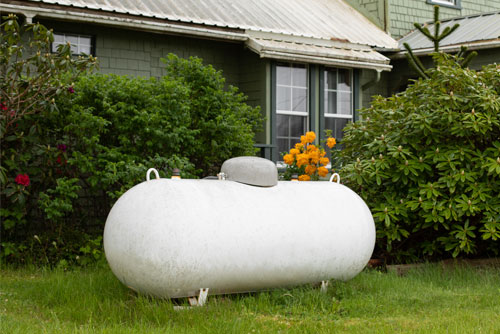
If you’re looking for a natural way to hide your propane tank on your patio, consider planting tall plants around the perimeter. Not only will this add visual interest to your outdoor space, but it will also create a natural screen to conceal the tank.
When selecting plants for this purpose, look for tall and bushy options such as evergreen shrubs, bamboo, or tall grasses. These types of plants can grow to be several feet tall, creating a natural barrier that will effectively hide the propane tank while still allowing for ventilation.
It’s important to consider the size of your propane tank when choosing which plants to use. For smaller tanks, you’ll only need one or two tall plants strategically placed around the perimeter. For larger tanks, you may need several plants positioned in a row to create a full screen effect.
When planting your chosen tall plants, make sure to leave enough space between them and the tank to allow for proper air circulation and maintenance access. You’ll also want to consider the type of soil and sun exposure needed for each plant to ensure they thrive in their new location.
One of the benefits of using tall plants as a natural screen is that they not only serve a functional purpose but can also add beauty and texture to your outdoor space. Consider choosing plants with different textures and colors to create a diverse and visually appealing landscape.
Overall, planting tall plants around your propane tank is a low-cost and natural way to create a screen and add beauty to your patio. By carefully selecting the right plants and properly maintaining them, you can enjoy a functional and attractive outdoor space for years to come.
Building Garden Beds Around the Tank to Hide It and Add Color
If you’re looking for a way to hide your unsightly propane tank while still adding a pop of color to your outdoor living space, building garden beds around the tank might be the perfect solution for you. Not only will the garden beds hide the propane tank, but they’ll also create a beautiful and inviting space for you and your guests to enjoy.
To get started, you’ll want to choose the right location for your garden beds. The area should be large enough to accommodate the size of your propane tank while still leaving enough space for the plants to grow. Ideally, you should choose a location that receives plenty of sunlight and is easily accessible for maintenance purposes.
Next, you’ll need to decide on the type of garden bed you want to build. Raised garden beds are a popular option as they offer better drainage and allow you to control the quality of the soil. You can choose to build the bed using lumber, stone, or even repurposed materials such as old pallets.
Once you have your garden bed in place, it’s time to start choosing your plants. When selecting plants, consider the amount of sunlight the area receives, the type of soil, and the climate in your area. Some great options for colorful plants that can also stand up to hot weather include petunias, marigolds, and zinnias.
When planting your garden bed, be sure to leave enough space around the propane tank to allow for proper ventilation and maintenance access. You can also add different levels to the garden bed to create visual interest and to better conceal the tank.
Finally, consider incorporating other elements into your garden bed to enhance its visual appeal. For example, you can add decorative rocks or mulch to the base of your plants, or even incorporate a small water feature or solar-powered lighting.
By building garden beds around your propane tank, you can effectively hide it while still creating a visually appealing outdoor space. So grab your gardening gloves and get started on transforming your patio today!
Enhancing Your Patio Space with Accessories
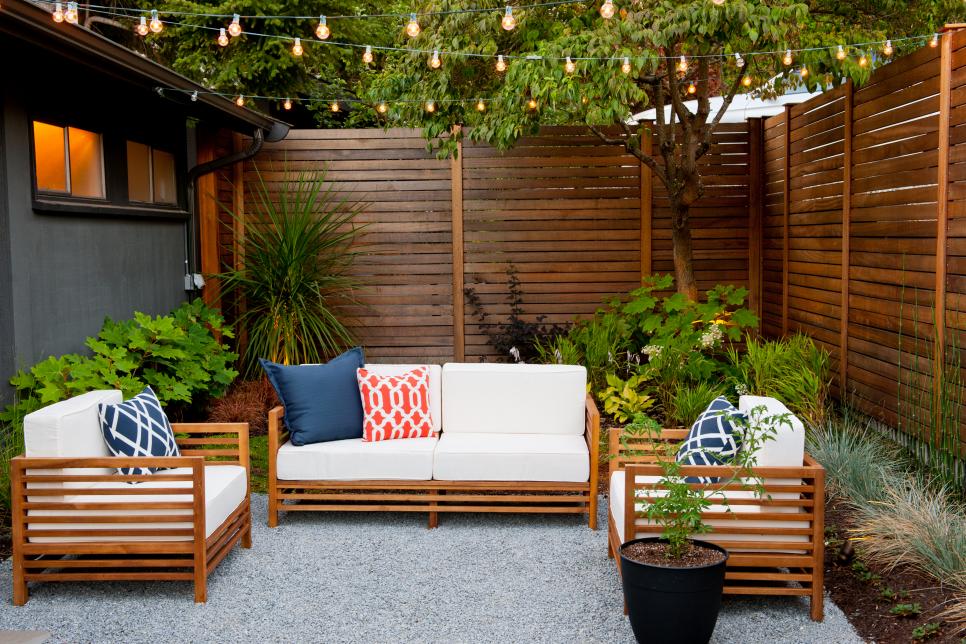
When it comes to creating an outdoor living space, your patio can serve as the ultimate location for relaxation and entertainment. However, many homeowners struggle with making their patio area feel complete. By incorporating the right accessories, you can elevate your patio space to the next level and create a more functional and inviting space.
One of the first things you should consider when accessorizing your patio is outdoor seating. Comfortable chairs, loveseats, or sofas help to create the perfect spot for relaxing and enjoying the outdoors. Look for seating options that are durable enough to withstand outdoor elements, such as pieces made from weather-resistant materials like metal, wicker, or wood.
To further enhance the ambiance of your patio, consider adding lighting elements. String lights, lanterns, and solar-powered stake lights are all great options that can help to set the mood and create a warm, inviting space. Lighting elements can also make your patio area safer to navigate at night.
Another important accessory to consider is an outdoor rug. The right rug can help to anchor your seating area and create a cozy atmosphere. Look for a rug made specifically for outdoor use, as these materials are designed to be water-resistant and durable in various weather conditions.
If you’re looking for ways to incorporate storage into your patio space, consider adding outdoor storage benches or ottomans. These pieces can double as seating options while also providing a place to store outdoor cushions, throw blankets, or other accessories. You can also add potted plants to your patio area to add color and natural beauty to the space.
Finally, don’t forget about the importance of privacy on your patio. Privacy screens, trellises, or tall plants can provide shade and create a secluded area for relaxing and entertaining. You can also consider adding outdoor curtains around your patio area to provide additional privacy.
In conclusion, accessorizing your patio space is an important step towards creating an outdoor living area that is both functional and inviting. By incorporating durable and stylish seating options, lighting elements, outdoor rugs, storage, and privacy, you can create the perfect space for outdoor entertainment and relaxation.
Adding Outdoor Seating or Potted Plants to Brighten Up Your Patio Space
One of the best ways to bring life to your patio space is by adding outdoor seating or potted plants. Not only do they create a welcoming environment, but they also add color and texture to your outdoor living area.
Outdoor seating is a must-have when it comes to patio décor. Choose comfortable and stylish chairs, loveseats, or sofas that complement your patio’s overall style. Wicker or wooden furniture can add a natural and rustic touch to your space, while metal pieces can create a modern and minimalist vibe.
To make your outdoor seating area even more inviting, add a few decorative pillows and cushions. These small accessories can add pops of color to your furniture while making it more comfortable. Choose colors and patterns that complement your overall patio décor theme.
If you’re working with a smaller patio space, consider using multi-functional furniture such as a storage bench that doubles as seating, or a compact bistro table and chair set. These pieces can help maximize your space while still providing ample seating options.
Another great way to liven up your patio space is by adding potted plants. Whether you choose flowers or foliage, potted plants can add a touch of nature and color to your outdoor area. Consider using different types of plants with varying sizes and textures to create depth and visual interest.
When selecting plants for your patio, think about the amount of sunlight and temperature they need to thrive. Some plants require more direct sunlight, while others prefer shadier areas. Be sure to choose plants that are appropriate for your patio’s conditions.
In addition to traditional potted plants, consider using hanging baskets or planters to add visual interest to your patio walls. You can also create a vertical garden using a trellis or climbing plants.
In conclusion, adding outdoor seating or potted plants can make your patio space feel more welcoming and comfortable. By selecting furniture and plants that complement your overall patio décor, you can create a space that is both functional and beautiful.

